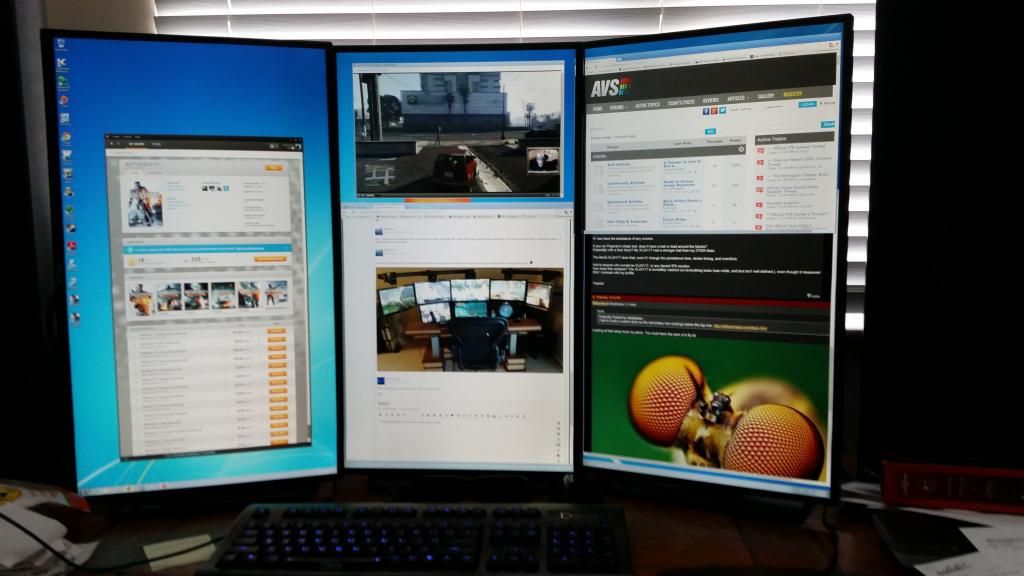elvn
Supreme [H]ardness
- Joined
- May 5, 2006
- Messages
- 5,286
Well, g-sync helps with tearing and judder (resulting from oversupplied fps vs hz, and under supplied fps vs hz) because it dynamically matches the monitor's hz to the framerate on the fly. It also allows you to go over your minimum or average frame rates without capping them like v-sync would. It also avoids input lag that can happen with v-sync.
There are several factors involved beyond that.
This still doesn't fix stuttering of some games (like watchdogs from what I've read), because of poor coding. If you check that 980sli [H] link a few posts back, you will also see that watchdogs only gains 15% in sli too. It's fps graph is a joke.
If you look up microstutter graphs online you will see some that keep the microstutter variance's lowest end above the 50 - 60fps line. That is what I talking about, rather then allowing the microstutter's low end and your overall fps graph's low end hit 30fps or less, and even bottom out repeatedly. You can also imagine if you are starting out at 30 - 40fps average to begin with, you don't have room to "down-stutter" and fps dip without crashing your fps.
By the way g-sync works at 144hz but ulmb doesn't. I believe that's just how it is since strobing was originally designed for 3d 60hz/60hz. In fact they had to overclock the g-sync module and add heatsinks or something in order for it to work at 144hz.
You can auto switch in this manner if you want, between desktop and games:
There are several factors involved beyond that.
This still doesn't fix stuttering of some games (like watchdogs from what I've read), because of poor coding. If you check that 980sli [H] link a few posts back, you will also see that watchdogs only gains 15% in sli too. It's fps graph is a joke.
If you look up microstutter graphs online you will see some that keep the microstutter variance's lowest end above the 50 - 60fps line. That is what I talking about, rather then allowing the microstutter's low end and your overall fps graph's low end hit 30fps or less, and even bottom out repeatedly. You can also imagine if you are starting out at 30 - 40fps average to begin with, you don't have room to "down-stutter" and fps dip without crashing your fps.
By the way g-sync works at 144hz but ulmb doesn't. I believe that's just how it is since strobing was originally designed for 3d 60hz/60hz. In fact they had to overclock the g-sync module and add heatsinks or something in order for it to work at 144hz.
You can auto switch in this manner if you want, between desktop and games:
Yep, set 120hz in the Nvidia control panel - Display > Change Resolution > Refresh setting
Then goto manage 3d settings in Nvidia control panel and set - Prefered Refresh Rate (Ancor Communication) to highest available
Then you can set ULMB on your monitor menu to on if you want to use it in desktop mode
When you start a 3d game the monitor will switch to 144hz automatically and gsync will switch on since ULMB doesn't work at 144hz.
Last edited:
![[H]ard|Forum](/styles/hardforum/xenforo/logo_dark.png)



